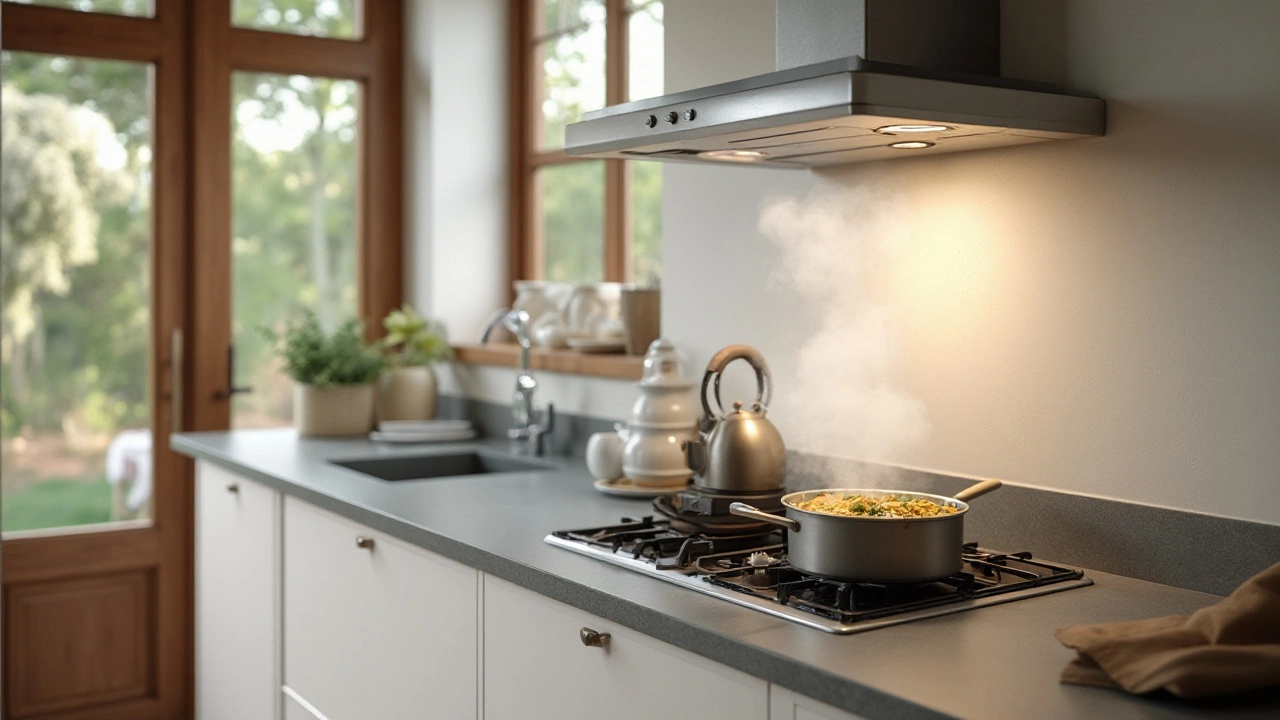Kitchen Fan Repair & Maintenance Guide
If your kitchen fan is making strange noises or not pulling air, you’re not alone. Most homeowners ignore a whining or weak fan until the whole kitchen gets greasy and stinky. The good news? A lot of the common issues are easy to fix with a few tools and a bit of patience.
Quick Diagnosis – What’s Wrong?
First, turn the fan on and listen. A high‑pitched whine usually means the motor bearings need cleaning or lubrication. A rattling sound points to a loose blade or a worn fan belt (if your model has one). If the fan spins but doesn’t move air, the grill might be clogged with grease or dust. Check the power cord and plug for any visible damage – a frayed cord can cause intermittent power.
Next, feel the motor housing. It should be warm, but not scorching. Overheating often means the motor is struggling because it’s dirty or the vents are blocked. A cool motor that still runs suggests the fan blades aren’t turning properly, which could be a broken shaft or a stripped gear.
Cleaning the Fan Motor – Step by Step
Cleaning is the most common fix and can extend the fan’s life by years. Here’s how to do it safely:
- Turn off the fan and unplug it. Safety first.
- Remove the outer grill. Most grills snap off or have a few screws. Keep the screws in a small bag so you don’t lose them.
- Take a soft brush or a vacuum with a brush attachment and clear out loose dust and grease from the grill and the motor housing.
- Mix a little dish soap with warm water. Dampen a cloth (don’t soak it) and wipe the motor’s external fins. Avoid getting water inside the motor windings.
- If the motor has visible oil ports, add a few drops of lightweight oil. Spin the fan by hand a few times to spread the oil.
- Re‑assemble the grill, plug the fan back in, and test it.
After cleaning, you should notice a smoother, quieter operation. If the fan still sounds rough, the bearings may be worn out and need replacement.
When to Replace Parts or Call a Pro
Some problems aren’t worth a DIY fix. If the motor makes a buzzing sound and won’t start, the internal windings are likely burnt and the motor should be swapped. Same with a cracked fan blade – a broken piece can swing loose and damage the motor.
Replacing a motor costs between £70 and £150, plus labour if you hire a technician. For most kitchen fans, a professional can finish the job in under an hour, so you won’t lose much time.
Call a qualified electrician or a local appliance repair service when you notice any of the following:
- Smell of burnt plastic.
- Frequent tripping of the circuit breaker.
- Motor or wiring that looks corroded.
- Any electrical work beyond a simple plug check.
Choosing a local repair service that knows kitchen ventilation can save you money and ensure the job meets safety standards.
Preventive Tips to Keep Your Fan Running
Regular maintenance is the cheapest way to avoid big repairs. Wipe the grill clean every 1–2 months, especially after cooking greasy meals. Run the fan for a few minutes after cooking to dry out any moisture that could cause rust.
Also, check the fan’s alignment annually. A misaligned blade can create extra wear on the motor. If you notice a decrease in airflow, it’s a sign that the motor or blades need attention.
With these simple steps, you’ll keep your kitchen fan humming, your kitchen smelling fresh, and avoid costly call‑outs. Happy cooking!

Extractor Fan Replacement: How Tough Is It Really?
Wondering if replacing an extractor fan is a big headache or a simple weekend project? This article breaks down what really happens when you swap out an old bathroom or kitchen fan. We’ll look at the tools you need, common pitfalls, and tips to make things go smoothly. Readers will get a clear idea of the work involved and whether it’s something they can tackle themselves. We’ll also point out when it probably makes sense to call in a pro.

Is It Necessary to Have an Extractor Fan in Your Home?
Extractor fans are often seen as a necessity in the modern home, especially in areas like the kitchen and bathroom. This article explores whether it's truly essential to have one. We'll examine the pros and cons of extractor fans, alternative solutions, and the potential impacts on health and home maintenance. Insights from experts and practical tips will help you make an informed decision about whether to install an extractor fan.